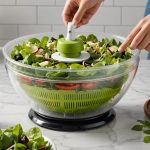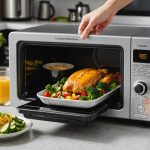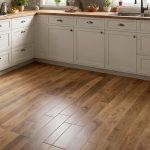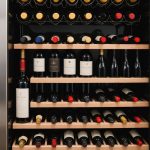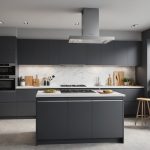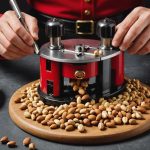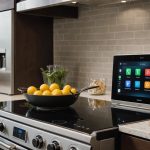Creating a high-volume bar is an art that balances efficiency and style. The right setup not only speeds up cocktail creation but enhances the overall guest experience. With a focus on essential tools, smart design, and effective workflow, learn how to transform your space into a hub of creativity and productivity. Discover how these elements come together to elevate your cocktail game, ensuring every drink shines, even during the busiest service hours. Get ready to shake things up!
Understanding High-Volume Bar Operations
Exploring the dynamics of bustling bar environments
Have you seen this : Essential attributes of the perfect pos system for restaurants with dine-in and drive-through options
Navigating the complexities of a high-volume bar setup requires a keen understanding of both space and time. An efficient bar workflow is crucial, especially when crafting cocktails during the busiest hours. The goal is to maintain speed without compromising quality, ensuring that each drink meets the patrons' expectations.
The Importance of Efficient Workflow
Maximizing productivity behind the bar
Also to see : Essential elements for choosing the ideal coffee supplier for your artisan café
In a high-volume setting, the workflow in cocktail preparation can significantly impact service quality. Bartenders must be adept at multitasking, seamlessly transitioning between orders. This involves strategic placement of ingredients, tools, and glassware to minimize movement and time wastage. An optimized workflow not only enhances productivity but also reduces stress and fatigue among staff.
Common Challenges During Peak Hours
Addressing hurdles in high-pressure environments
High-volume bars often face several challenges during peak hours, such as long queues and order mix-ups. Overcoming these obstacles requires a blend of skill and organization. Here are a few common challenges:
- Limited space: Navigating cramped conditions can slow down service.
- High demand: Managing multiple orders simultaneously is demanding.
- Inventory management: Ensuring all ingredients are stocked and accessible.
Efficient high-volume bar setup and workflow strategies can transform these challenges into opportunities for improvement, ultimately enhancing customer satisfaction and operational success.
Essential Equipment for a High-Volume Bar
Equipping your bar for peak performance
Key Equipment for High-Volume Cocktail Production
The backbone of a successful bar setup
In a high-volume bar, having the right bar equipment is crucial to maintaining efficiency and quality. Essential cocktail tools include shakers, strainers, and muddlers. These tools must be durable and easy to use, allowing bartenders to work swiftly without sacrificing drink quality.
Automated solutions, like electric juicers and ice crushers, offer significant advantages over manual tools. They reduce preparation time and minimize physical strain, enabling bartenders to meet high demand with ease.
Manual vs. Automated Tools
Weighing the pros and cons
While manual tools offer precision and control, automated options can enhance productivity. For instance, an electric blender can quickly prepare multiple drinks, whereas a hand shaker might be slower but offers a personal touch. Balancing both types of equipment ensures versatility and efficiency.
Recommendations for Durable and Efficient Barware
Investing in quality for long-term success
Selecting the right barware is essential for a high-volume bar. Look for stainless steel shakers and glassware that can withstand heavy use. Consider the following:
- Durability: Choose materials that resist wear and tear.
- Efficiency: Opt for tools that streamline processes.
- Versatility: Ensure tools can handle various cocktail recipes.
By investing in the right bar equipment and cocktail tools, bars can enhance their service quality and operational success.
Designing the Optimal Bar Layout
Enhancing efficiency through strategic design
Best Practices for Bar Layout
Optimizing space for improved workflow
Creating an optimal bar layout design is essential for maximizing workflow efficiency. A well-thought-out design ensures that bartenders can move fluidly, reducing unnecessary steps and time wastage. Consider implementing the following practices:
- Zoning: Divide the bar into specific zones for preparation, service, and cleaning. This separation helps streamline tasks and minimizes congestion.
- Accessibility: Ensure all essential tools and ingredients are within arm's reach. This proximity reduces time spent searching for items and enhances service speed.
- Visibility: Arrange glassware and ingredients at eye level to allow quick identification and retrieval.
Flow Diagrams Illustrating Optimal Designs
Visualizing the path to efficiency
Flow diagrams can be instrumental in visualizing an effective bar layout design. These diagrams map out the bartender's movements, highlighting areas of potential bottleneck. By analyzing these paths, managers can make informed adjustments to improve workflow efficiency.
Importance of Accessibility for Staff and Customers
Balancing functionality and customer experience
A successful bar layout design not only serves the staff but also enhances the customer experience. Ensuring easy access for patrons to order and receive drinks is crucial. This balance between staff workflow efficiency and customer accessibility fosters a welcoming and efficient bar environment.
Implementing Effective Staff Training
Enhancing skills for high-volume success
Training Programs for High-Volume Environments
Preparing staff for peak performance
In bustling bar settings, bartender training is crucial to maintaining service quality. Effective training programs should focus on cocktail preparation skills and staff efficiency. These programs equip bartenders with techniques to manage high-pressure situations, ensuring they deliver exceptional service even during peak hours.
Techniques for Improving Staff Coordination and Communication
Building a cohesive team
Strong staff coordination and communication are vital in high-volume bars. Training should emphasize clear communication channels and teamwork strategies. Techniques such as role-playing and team-building exercises can enhance these skills, fostering a more efficient and harmonious work environment.
Tips for Cross-Training Staff to Handle Multiple Roles
Increasing versatility and adaptability
Cross-training is an effective strategy to boost staff efficiency and adaptability. By learning multiple roles, staff can seamlessly transition between tasks, ensuring smooth operations. Here are some tips:
- Rotate roles regularly to keep skills sharp.
- Encourage staff to share cocktail preparation skills.
- Provide opportunities for staff to lead training sessions.
By focusing on comprehensive bartender training and cross-training, bars can improve their service quality and operational success, ensuring they are well-equipped to handle high-volume demands.
Streamlining Cocktail Preparation Processes
Enhancing speed and efficiency in cocktail crafting
Techniques for Prepping Ingredients in Advance
Essential steps for efficient mixing
In high-volume bar settings, cocktail preparation efficiency is paramount. Prepping ingredients ahead of time is a key technique. This involves washing, cutting, and storing garnishes and mixers before the rush begins. By having ingredients ready, bartenders can focus on efficient mixing rather than last-minute preparations.
Utilizing Batch Mixing for High-Demand Cocktails
A strategy for speed and consistency
Batch mixing is another effective method for handling high-demand cocktails. By preparing large quantities of popular drinks, bars can serve customers swiftly without sacrificing quality. This approach not only speeds up service but also maintains consistency across servings, ensuring each cocktail meets the same standard.
Importance of Mise en Place in a Fast-Paced Environment
Organizing for optimal performance
The French culinary term "mise en place," meaning "everything in its place," is crucial in a fast-paced bar environment. By organizing tools and ingredients efficiently, bartenders can reduce time spent searching for items. This practice enhances speed techniques and minimizes errors during cocktail preparation.
- Pre-prepared garnishes: Lemon slices, mint leaves
- Batch-mixed cocktails: Margaritas, mojitos
- Organized stations: Shakers, glassware, strainers
Implementing these strategies can significantly improve cocktail preparation processes, enabling bars to meet customer demands effectively.
Managing Peak Hours and Customer Flow
Enhancing service during busy times
Strategies for Handling Increased Customer Volume
Optimizing operations for peak efficiency
Managing peak hour management is crucial to ensure seamless operations in high-volume bars. Implementing a systematic approach can help handle the influx of customers effectively. Consider these strategies:
- Staff scheduling: Align staff shifts with peak times to ensure adequate coverage.
- Pre-preparation: Have popular cocktails and garnishes ready to reduce preparation time.
- Queue management: Use a numbering system or digital app to organize customer orders.
Techniques for Minimizing Wait Times Without Sacrificing Quality
Balancing speed and service quality
Reducing wait times is essential for maintaining a positive customer service experience. Employing efficient techniques ensures that service quality remains high even during busy periods:
- Batch processing: Prepare popular drinks in larger quantities.
- Streamlined ordering: Use tablets or apps for faster order taking.
- Effective communication: Ensure staff communicate clearly to avoid order mix-ups.
Importance of Maintaining a Positive Customer Experience
Fostering loyalty and satisfaction
A positive customer experience is vital for bar success. Happy customers are more likely to return and recommend your establishment. Focus on:
- Personal interaction: Engage with customers to make them feel valued.
- Consistent quality: Ensure every drink meets your bar's standards.
- Feedback systems: Encourage customer feedback to improve services.
Implementing these strategies can significantly enhance bar efficiency during peak hours, ensuring a smooth and enjoyable experience for patrons.
Troubleshooting Common Bar Challenges
Enhancing operational efficiency through effective problem-solving
Identifying and Addressing Common Operational Issues
Proactive measures to maintain service quality
In high-volume bars, bar challenges often arise unexpectedly, impacting operational efficiency. Identifying these issues early is crucial for maintaining service quality. Common problems include equipment malfunctions, inventory shortages, and miscommunication among staff. Addressing these challenges promptly prevents service disruptions and ensures a smooth operation.
Solutions for Equipment Malfunctions During Busy Hours
Quick fixes to maintain efficiency
Equipment malfunctions can severely impact a bar's ability to serve customers efficiently. Having a contingency plan is essential. Consider these solutions:
- Regular maintenance: Schedule routine checks to prevent unexpected breakdowns.
- Backup equipment: Keep spare tools and machines ready for immediate use.
- Staff training: Equip staff with basic troubleshooting skills.
Adapting to Unexpected Challenges While Maintaining Service Quality
Flexibility in high-pressure situations
Adapting to unforeseen bar challenges is vital for sustaining operational efficiency. Encourage flexibility and quick thinking among staff. Implementing the following strategies can help:
- Role rotation: Allow staff to switch roles to cover for absent colleagues.
- Clear communication: Use headsets or apps for instant updates.
- Customer engagement: Keep customers informed and engaged during delays.
By focusing on these solutions, bars can effectively manage bar challenges, ensuring continued service excellence and customer satisfaction.




